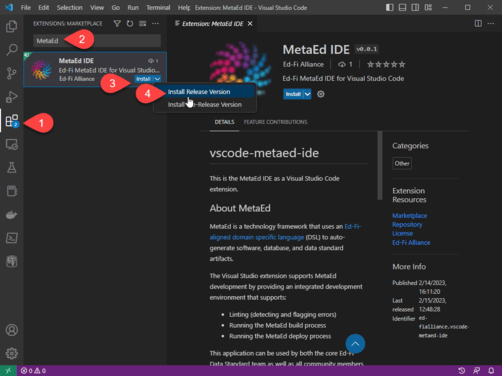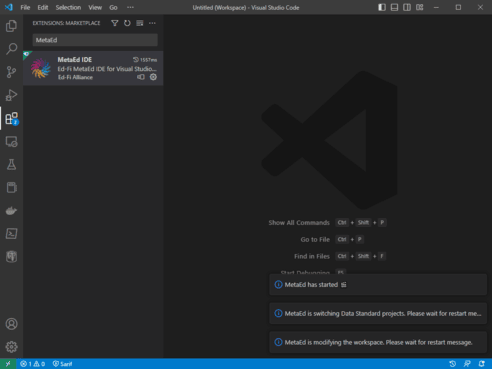Getting Started - Installation
The MetaEd IDE installation is straightforward. It's worth noting that the MetaEd IDE is a plug-in to the free, open source Visual Studio Code text editor. The installation steps below walk you through a complete install.
Detail on each step follows.
If you run into issues during install, please consult the troubleshooting information located at: Installation and Update Issues. If you still have issues, please raise a source case through the Ed-Fi Community Hub and provide details of the issue.
Step 1. Download and Install Visual Studio Code
Download and install Visual Studio Code, which is available for Windows, Linux, and macOS.
The Ed-Fi development team tests MetaEd on Windows devices. Because VS Code is multi-platform, the application should work on other platforms, but we may not be able to validate or debug issues that arise in Linux and macOS.
Step 2. Install the MetaEd Extension
Open the Extensions panel from the toolbar on the left, or from the View > Extensions menu. Search for MetaEd and install the latest release version.

Step 3. Wait for the Extension to Activate
Wait a moment for the extension to activate. When ready, you'll see a notification that "MetaEd has started".

Step 4. Configure Settings
Open the settings from the File > Preferences > Settings menu. MetaEd IDE -
Creating and Maintaining Your Extension (X) provides more detail on the
settings, most of which depend on your project needs. Most importantly, please
be sure to accept the Ed-Fi License Agreement for Use of
the Ed-Fi Unifying Data Model,
as shown in the screenshot below.

That's it! You can now start using MetaEd in Visual Studio Code.
Beginning in March, 2025, the MetaEd source code uses the Apache License, version 2.0, like the other Ed-fi applications. However, the Unifying Data Model files continue to be provided through MetaEd under terms of the Ed-Fi License Agreement.